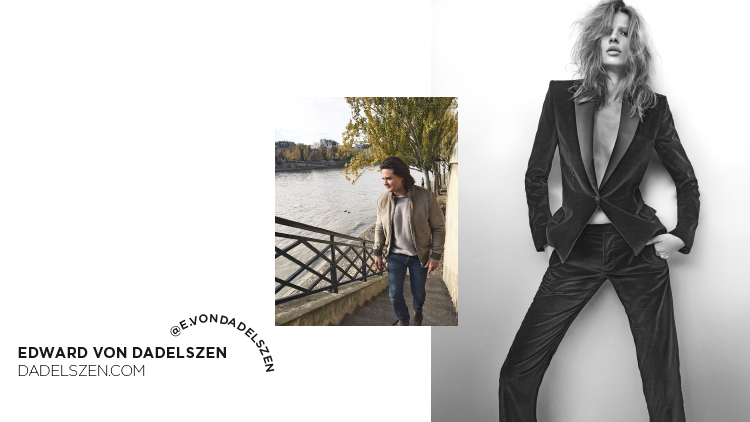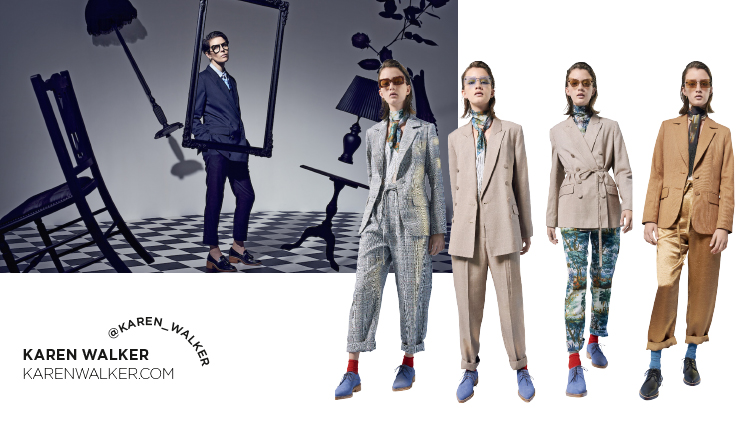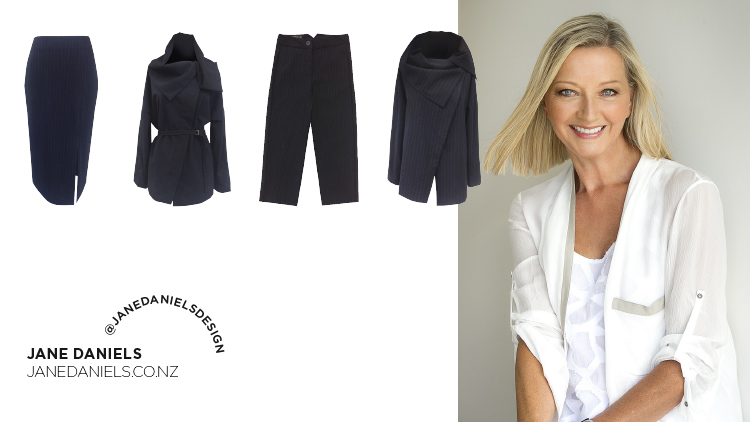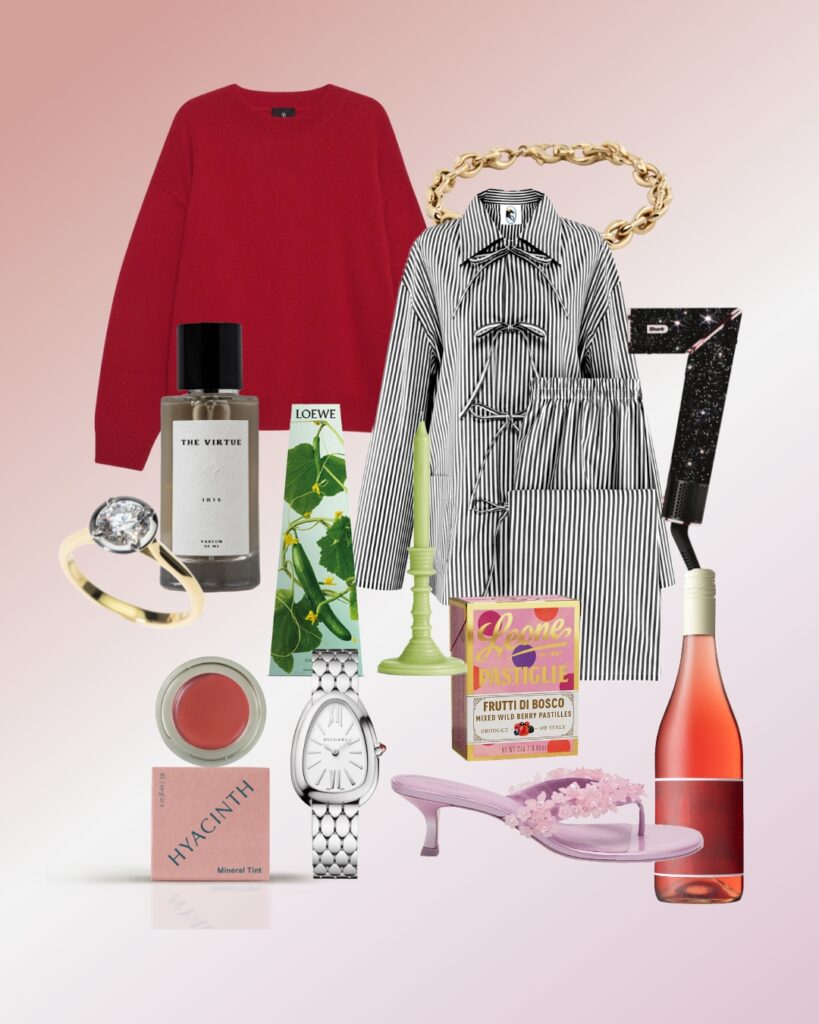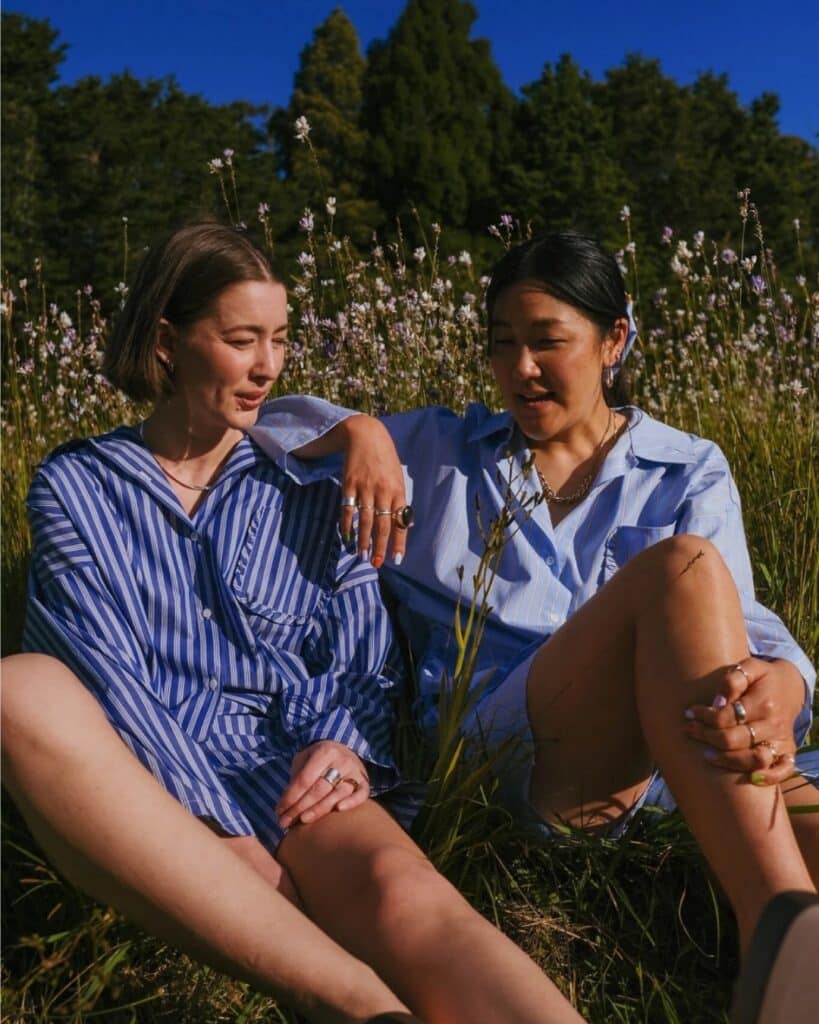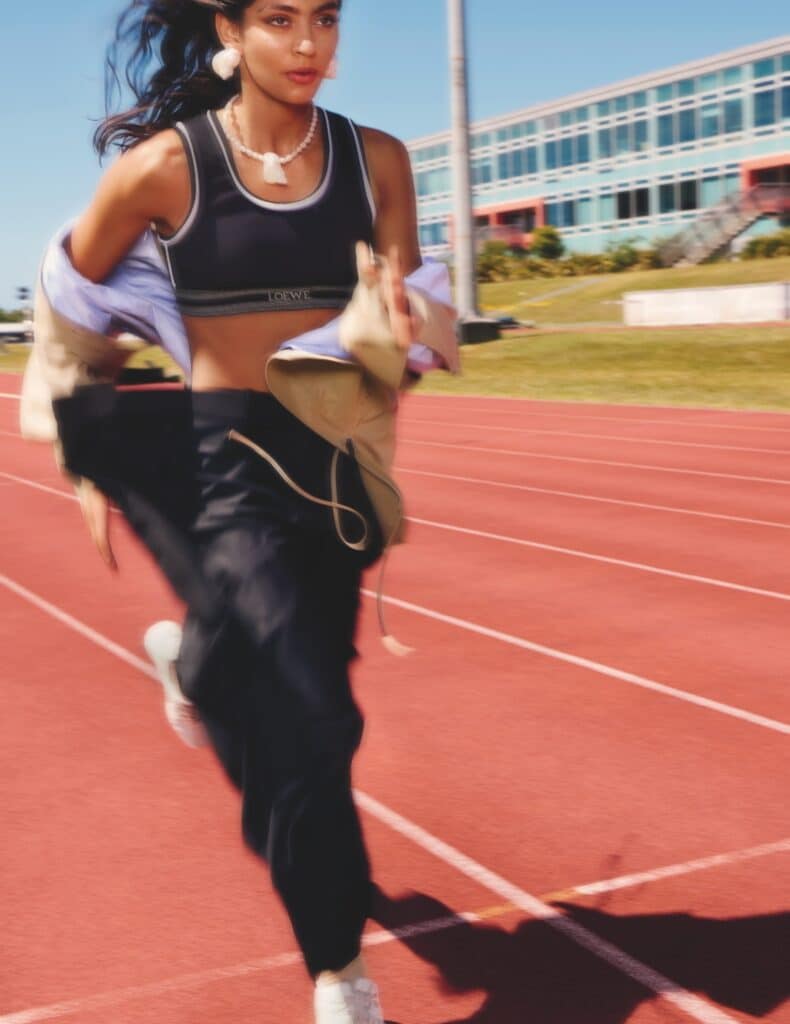Four New Zealand authorities on tailoring discuss their signature cuts and how they should be styled.
Edward von Dadelszen
dadelszen.com | @e.vondadelszen
Describe your signature suit: The Elvira is based on the vintage, boyfriend-fit blazer made iconic during the ’70s by the likes of Lauren Hutton and Bianca Jagger. We worked with our master pattern maker in Italy on a modern interpretation of this concept. How has it evolved since its first inception? We first introduced the Elvira in a winter white shade, based on the killer jacket-and-skirt combo worn by Michelle Pfeiffer’s character in Scarface. It was intended to be a one-off, but we have since made this cut a permanent addition to the Dadelszen tailoring offering due to its popularity and ability to transcend age and occasion. How has your approach to tailoring evolved since you first started designing? We now offer the same suit-jacket cut with a variety of different matching trousers and skirts, ranging from high-waisted and slim, to more masculine styles. Our clients tend to select at least two different trousers to pair with their suit jackets, increasing wearability. What has influenced these evolutions? Our own desires (as wearers of tailoring) and, of course, our customers. You can’t expect every woman who purchases a blazer designed to last season upon season to want just one matching pant to wear with it. What factors do you consider when designing workwear for the modern woman? Lifestyle is what it comes down to. We offer our suiting in hundreds of different fabric options. One client may want a raw silk tuxedo jacket for cocktail hour and the same cut in a woollen flannel or cashmere for work. It comes down to what excites and fits seamlessly into the lifestyle of the wearer. With each cut we design, we think, “Will this work in a multitude of fabrics? Does it work within our seasonal womenswear offering?” What type of woman do you have in mind when designing, and what do you aim to provide her with? There is no particular woman we have in mind — the Dadelszen woman can be of any age and stage. But she does love quality and knows what she likes. Everything from our collection is made to last, so rarely will we have women shop with us who only want to wear the latest trends. What are the components of your ultimate power suit? Perfect cut, perfect fit and fabric. How would you style it? Anything goes, but an impeccable suit can be killed by the wrong footwear. What does power dressing mean to you? Confidence is key. The best compliment we received recently was that a client’s tuxedo suit made her feel confident, strong and beautiful, and she was sure that she and it “would have many fun times together”. Who is your power-dressing muse? Charlotte Rampling.
Benny Castles
worldbrand.co.nz | @worldbrandinnz
Describe your signature suit: World is all about colour and shape, and wearing your personality on the outside. A suit should elevate your confidence and straighten your posture, but ultimately make you feel like the very best version of yourself. How has it evolved since its first inception? Our core values and sensibilities do not change but every season we look to excite by recreating the familiar — turning existing concepts on their head to provide all individuals the opportunity to be stylish. How has your approach to tailoring evolved since you first started designing? Denise L’Estrange-Corbet founded World on tailoring and craftsmanship. With [co-founder and creative director] Francis Hooper’s exuberance, the perfect combination of style and substance was achieved. As a designer I maintain this spirit, channelling Francis’ point of view into collections that encourage individuality and creativity in the wardrobe. We continually push ourselves to refine our finishings and details, while reimagining shapes and fabrications. What factors do you consider when designing workwear for the modern woman? Who the woman is! Our muses are not figments but real clients we know and bring into our consciousness as we design. Understanding them is key to presupposing what they might find instinctual or fascinating.
“A suit should fill you with the strength of your individual purpose and esteem… the components are different for everyone.”
What type of woman do you have in mind when designing, and what do you aim to provide her with? World is a personality-focused brand — we look to dress your mind, not your body. We often discuss the reality of the suit-wearing woman in the corporate and non-corporate sphere, how we can assist her in achieving her goals and help her present herself in a way that is true to her endeavours and personality. What are the components of your ultimate power suit? Confidence. A suit should fill you with the strength of your individual purpose and esteem. The components are different for each and every person, but we must always succeed in creating a silhouette and finish that captures attention without asking for it. How would you style it? I tend to be an additive stylist, always looking for opportunities to incorporate colour, texture and personality through accoutrements such as jewellery, pochettes, ties and bows, as well as belting. The choice of shoe and handbag is also key, and don’t forget the face, whether that means glasses of a special nature or makeup designed to enhance your features. Your look must be head-to-toe. What does power dressing mean to you? The expression of confidence and personality through fashion. It forgets to fit in or go along with the crowd. It’s individual and emotive, it will inspire and delight, putting you in the right frame of mind to achieve whatever the day will bring. Who is your power-dressing muse? Denise L’Estrange-Corbet, because her style is the perfect cross between culture and camp that could not be achieved by any other individual.
Karen Walker
karenwalker.com | @karen_walker
Describe your signature suit: Very masculine. We never do ‘ladies’’ suiting. How has it evolved since its first inception? The style has not changed. The very first range we sold internationally was a collection of very masculine suiting and we made our name off the back of it — Madonna made the pants from that collection famous. Our love for masculine suiting has not waned since. How has your approach to tailoring evolved since you first started designing? The silhouettes and concepts haven’t changed at all, however, the level of craft has gotten better as has our understanding of what it is to build a suit, rather than just a suit-shaped thing. What has influenced these evolutions? A 20-year-long continuous enquiry into tailoring, and an obsession with detail. What factors do you consider when designing workwear for the modern woman? Suiting as [the quintessential] workwear is an out-of-date concept. That’s just not how people dress anymore. When we design suiting, it’s for women who love a masculine style, either single-mindedly or contrasted with feminine or utility-style pieces. It’s nothing to do with work. Yes, you can wear it to work, but that’s not our motivation or how most of our customers approach it. What’s your favourite way to style a suit? I like casual pushed against formal. If it’s the full suit then it’s with man-style brogues and a T-shirt. But I also love a blazer with a pair of silk pyjama pants, or tailored pants with a sweater or T-shirt. It’s all about subversion, surprise and contrast. What does power dressing mean to you? Having presence — and it’s nothing to do with suiting. The term ‘power dressing’ is being thrown around a lot these days and it’s probably partly ironic, as distinct to the serious, political context it was associated with in the ’80s. I suppose it holds some interest for those who weren’t there then — personally, I don’t like the term for this moment in time. I think it drags us back linguistically, conceptually and politically and I feel uncomfortable with it. I find it more disempowering than empowering as an idea. Who is your suiting muse? Diane Keaton, Charlotte Rampling, Elsa Peretti, Charlie Watts, Jarvis Cocker, Katharine Hepburn, Lauren Bacall, [Vladimir] Mayakovsky, Nick Cave and [Arthur] Rimbaud.
Jane Daniels
janedaniels.co.nz | @janedanielsdesign
Describe your signature suit: Elegant and simple made from quality European fabric. Always impeccably cut, every season we add interesting new detailing. How has it evolved since its first inception? With experience comes refinement. While the construction is more complex, the end result appears more simplified, more architectural. Tailoring is still the backbone of what I do and I spend a lot of time and focus on selection of cloth for purpose. How has your approach to tailoring evolved since you first started designing? From a well-balanced and essential pattern block I now use draping on the stand more to achieve interesting design features. My design and pattern team brings a mix of youth and experience and we work closely together in the studio. There is a lot more trial of design now before committing products to market. What has influenced these evolutions? Stretch fabric! Developments in fabrics from my Italian mills have resulted in cloth that can perform in different ways. This has allowed us to be innovative in our tailoring with some exciting outcomes. It has become a case of that which is possible weighed against that which is practical. What factors do you consider when designing workwear for the modern woman? Our suiting must be able to take her from the boardroom to a cocktail lounge, or through airports and other climatically controlled environments while still feeling comfortable, looking good and being easily maintainable. What type of woman do you have in mind when designing, and what do you aim to provide her with? I make clothes for women who are self-assured and quietly confident. My aim is that my client can look great, appropriate and professional and get on with what she does without giving her clothing a second thought. What are the components of your ultimate power suit? A superior cut (with which comes comfort), bespoke-dyed European fabric of the highest quality, exclusively made buttons from Germany and France, Italian stretch fabric linings and — this season — handpainted linings. How would you style it? This season, I would style the suit with our Japanese-inspired crossover shirt, black leather boots and, for a clean look, minimal jewellery. What does power dressing mean to you? Power dressing is a statement — it’s your opening position, it’s ownership of confidence, and it suggests a belief in ability. To a young person it might help open a door, to a businesswoman its purpose might be to say, “I belong here.” So said a client who sits on many international boards, and who remarked to me that she must look powerful and feminine but not fussy, and must blend in with a lot of confident, powerful men. Who is your power-dressing muse? I gravitate towards women with a sleek style that suits my refined architectural aesthetic. Some that come to mind are Angelina Jolie, Victoria Beckham, Stella Tennant, Cate Blanchett, Ellen DeGeneres and the late Carolyn Bessette-Kennedy.
Words: Phoebe Watt
Photos: Supplied
This article appeared in Fashion Quarterly, Issue 1, 2018.
WATCH: 5 hacks to make your phone battery last longer


